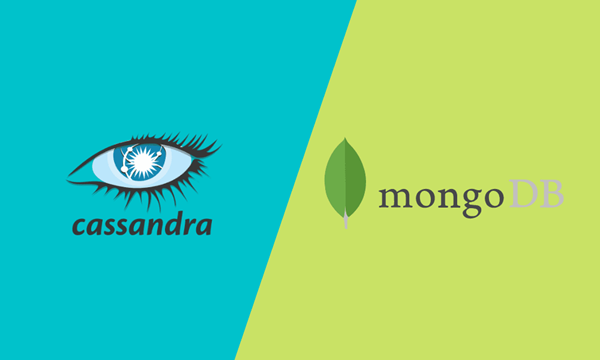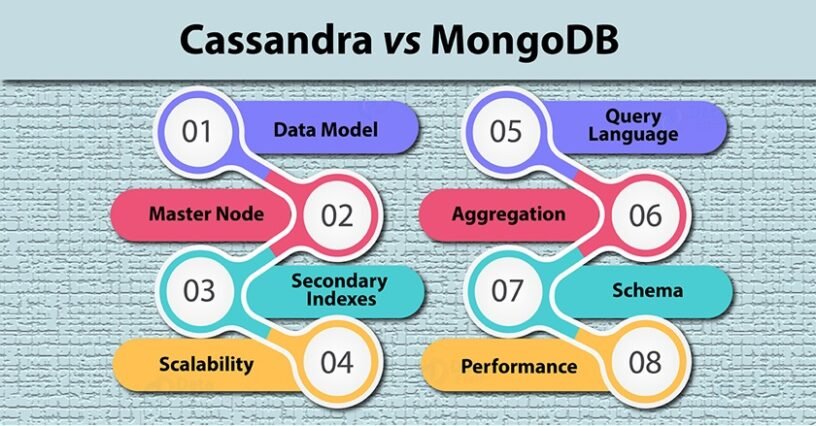Table of Contents
Introduction – Cassandra vs MongoDB
When it comes to NoSQL databases, Apache Cassandra and MongoDB are two of the most prominent players in the field. Both offer unique features and cater to different use cases, making the choice between them crucial depending on your project requirements. In this article, we will delve into a detailed comparison of Cassandra vs MongoDB, exploring their architecture, use cases, and real-life examples to help you make an informed decision.
Understanding Cassandra
Architecture
Cassandra is a distributed NoSQL database designed to handle large amounts of data across many commodity servers, providing high availability with no single point of failure. Its architecture is based on a peer-to-peer distributed system, where data is distributed across all nodes in the cluster. This ensures that each node is capable of handling read and write requests, contributing to fault tolerance and scalability.
Use Cases
Cassandra is particularly well-suited for applications that require high write throughput and the ability to handle large datasets spread across multiple data centers. Some common use cases include:
- IoT Applications: For instance, The Weather Channel uses Cassandra to process billions of weather data points daily, ensuring real-time analytics and predictions.
- Messaging Systems: Messaging platforms like Facebook Messenger rely on Cassandra for its high write throughput and ability to scale horizontally.
- E-commerce: Retail giants such as eBay use Cassandra to manage their extensive product catalogs and customer data, benefiting from its high availability and fault tolerance.
Understanding MongoDB
Architecture
MongoDB is a document-oriented NoSQL database that uses JSON-like documents with optional schemas. Its architecture is designed around collections of documents, making it highly flexible and easy to use for developers familiar with JSON. MongoDB uses a replica set architecture for high availability and automatic failover, where each replica set consists of a primary node and secondary nodes.
Use Cases
MongoDB excels in scenarios where flexibility, ease of use, and rapid development are essential. It is commonly used in:
- Content Management Systems (CMS): Platforms like WordPress can leverage MongoDB to store and manage dynamic content, offering flexibility in data modeling.
- Real-time Analytics: Companies such as MetLife use MongoDB for real-time data processing and analytics, taking advantage of its dynamic schema capabilities.
- Mobile Applications: With its ability to handle varied and evolving data structures, MongoDB is ideal for mobile app backends, enabling quick iterations and updates.
Key Differences Between Cassandra and MongoDB
Data Model
- Cassandra: Uses a wide-column store model, where data is stored in rows and columns, similar to a relational database but with much more flexibility in terms of schema.
- MongoDB: Employs a document store model, storing data in flexible, JSON-like documents, allowing for nested data structures and easy modifications.
Scalability
- Cassandra: Known for its linear scalability and ability to handle large-scale, distributed data across multiple data centers without compromising on performance.
- MongoDB: Offers horizontal scalability through sharding, which distributes data across multiple servers. However, its performance can vary depending on the complexity of the queries and the structure of the documents.
Consistency and Availability
- Cassandra: Prioritizes availability and partition tolerance, making it ideal for use cases where uptime is critical. It follows an eventually consistent model, allowing for some inconsistency in exchange for high availability.
- MongoDB: Provides tunable consistency settings, enabling developers to balance between strong consistency and high availability based on their specific needs.
Query Language
- Cassandra: Uses CQL (Cassandra Query Language), which is similar to SQL but tailored for its wide-column store architecture.
- MongoDB: Utilizes a rich query language based on JSON, making it intuitive for developers who are already familiar with JSON and JavaScript.
Real-Life Examples
Example 1: Netflix (Cassandra)
Netflix uses Cassandra to manage its massive amount of streaming data. The need for high write throughput, low latency, and the ability to distribute data across multiple regions makes Cassandra the perfect fit for their requirements.
Example 2: The New York Times (MongoDB)
The New York Times uses MongoDB to store and serve multimedia content. The flexibility of MongoDB’s document model allows them to manage a wide variety of data types, from articles to images and videos, making it easier to handle their diverse content needs.
Conclusion – Cassandra vs MongoDB
Both Cassandra and MongoDB offer powerful features tailored to different use cases. If your application demands high write throughput, horizontal scalability, and fault tolerance across multiple data centers, Cassandra is likely the better choice. On the other hand, if you need flexibility, rapid development, and ease of use, MongoDB might be more suitable.
By understanding the strengths and weaknesses of each database, you can make an informed decision that best suits your project’s requirements. Whether you are building a high-availability system like Netflix or managing diverse content like The New York Times, choosing the right NoSQL database can significantly impact your application’s performance and scalability.

Frequently Asked Questions about Cassandra vs MongoDB
Is MongoDB Better Than Cassandra?
Cassandra vs MongoDB : Whether MongoDB is better than Cassandra depends on the specific needs of your application. MongoDB excels in flexibility, ease of use, and rapid development, making it ideal for use cases like content management systems, real-time analytics, and mobile applications. On the other hand, Cassandra offers high write throughput, fault tolerance, and the ability to scale horizontally across multiple data centers, making it suitable for applications that require high availability and large-scale data management, such as IoT applications and messaging systems.
What Are the Disadvantages of Cassandra?
While Cassandra offers many benefits, it also has some disadvantages:
- Complexity: Managing and maintaining a Cassandra cluster can be complex, especially for large-scale deployments.
- Learning Curve: Cassandra’s query language (CQL) and data modeling concepts can be challenging for developers new to NoSQL databases.
- Consistency Model: Cassandra follows an eventually consistent model, which may not be suitable for applications that require immediate consistency.
- Resource Intensive: Running a Cassandra cluster can be resource-intensive, requiring significant hardware and operational overhead.
What Is the Difference Between MongoDB and Cassandra Medium?
The term “medium” in the context of databases typically refers to the data model and storage architecture. Here’s a comparison:
- Data Model:
- MongoDB: Uses a document-oriented data model, storing data in flexible, JSON-like documents. This allows for nested data structures and dynamic schemas.
- Cassandra: Utilizes a wide-column store model, where data is stored in rows and columns within tables, similar to a relational database but with more flexibility in schema design.
- Storage Architecture:
- MongoDB: Designed for document storage and retrieval, making it easy to handle complex, nested data.
- Cassandra: Designed for distributed, scalable storage, optimized for write-heavy workloads and large datasets spread across multiple nodes.
What Is Cassandra DB Good For?
Cassandra DB is particularly well-suited for the following use cases:
- High Write Throughput: Ideal for applications that require fast and frequent data writes, such as logging and real-time data ingestion.
- Fault Tolerance and High Availability: Perfect for systems that need to remain operational even in the event of node failures, such as financial services and healthcare applications.
- Large-Scale Data Management: Suitable for managing vast amounts of data across multiple data centers, making it a good fit for global enterprises and large-scale web applications.
- Time-Series Data: Often used for time-series data storage, such as IoT sensor data, due to its efficient handling of write-heavy workloads and time-based queries.




Leave a Reply